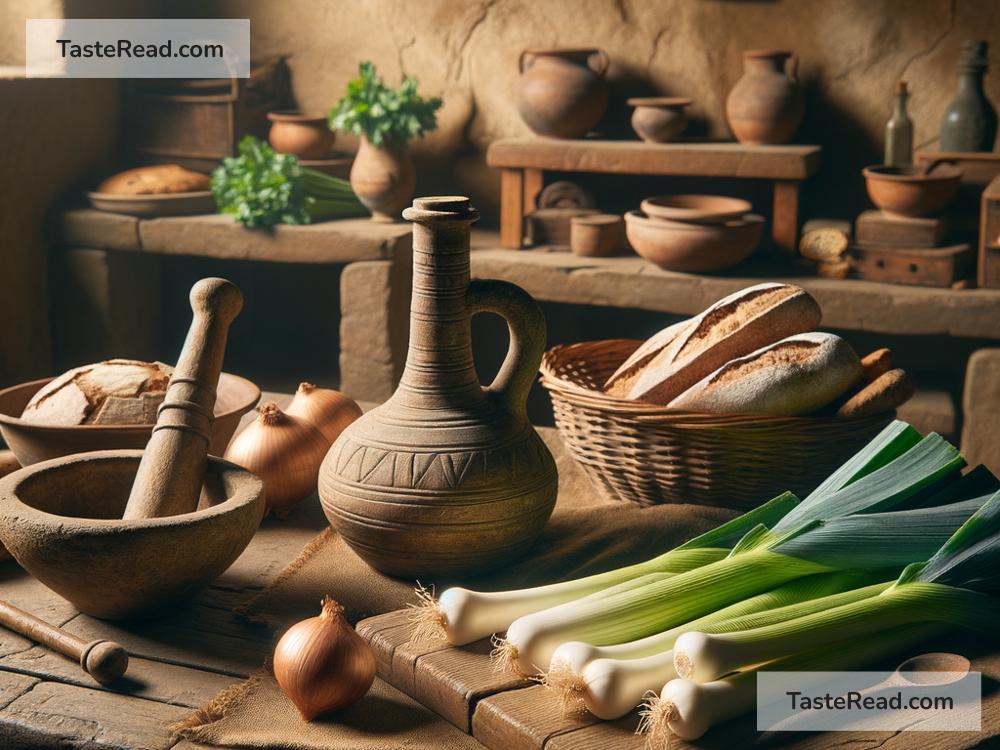The Fascinating History of Leeks in Ancient Roman Diets
Leeks, the humble green vegetables, have been around for thousands of years and have an interesting past. They are not just tasty; they also tell a story about how people lived, what they ate, and what they believed in ancient times. Among the many cultures that valued leeks, the ancient Romans stand out. Let’s take a closer look at how leeks played an important role in Roman diets and their fascinating history.
What Are Leeks?
Before diving into Roman history, let’s first understand what leeks are. Leeks are part of the onion family, but they have a milder and sweeter taste compared to onions. Their long, white stalks and green leaves make them easy to recognize. You can use them in soups, stews, or as a side dish, and they were just as versatile thousands of years ago as they are today.
The Roman Love for Leeks
When you think of ancient Roman food, you might imagine grand feasts with roasted meat, bread, and wine. But vegetables were a big part of their diet as well, and one vegetable the Romans loved was the leek. Leeks were considered not only nutritious but also a symbol of good health. Roman cooks often paired them with other ingredients like oils, herbs, and grains. They were especially used in soups and porridges, which were common meals for rich and poor Romans alike.
Leeks were easy to grow in the Mediterranean climate, which made them widely accessible. Farmers and gardeners would cultivate them across the Roman Empire, and they became a staple of Roman diets. Leeks were so popular that they were even referred to in Roman literature. The famous Roman naturalist and author Pliny the Elder mentioned leeks in his writings, praising their medicinal qualities.
Leeks and Roman Health
Romans didn’t just eat leeks because they tasted good; they also believed that leeks had health benefits. Ancient Roman physicians recommended leeks as remedies for sore throats and stomach issues. Romans viewed food as medicine, and leeks were considered one of the healthiest vegetables you could eat.
One famous Roman emperor, Nero, was nicknamed “Porrophagus,” which means “leek eater.” Legend has it that Nero believed eating leeks regularly would improve his singing voice. He supposedly ate leeks every day to keep his vocal cords in top shape. Whether or not leeks truly helped his singing, the story shows how much Romans respected this vegetable.
Leeks in Roman Cuisine
Leeks were used in many Roman recipes, both simple and elaborate. They were often boiled or roasted and paired with spices like coriander, thyme, and mustard seeds. Wealthier Romans might combine leeks with expensive ingredients like fish or imported spices, while poorer Romans might cook them with beans or barley to make a filling stew.
One popular Roman dish was a porridge made with leeks, grains, and flavors like garlic and honey. Porridge was a versatile meal that could be adapted to whatever people had available, making it a cornerstone of Roman cuisine. This dish was not only cheap but also nourishing, which explains why so many Romans relied on it.
Leeks and Roman Culture
Leeks weren’t just about food and health; they were woven into Roman culture. They had symbolic importance and were associated with purity and strength. Romans were known for their ability to adapt and innovate, and leeks played a small but significant role in their culinary achievements.
Leeks also showed up in Roman festivals and celebrations. One festival, known as Saturnalia, was a time of feasting and joy. Romans exchanged gifts, enjoyed special meals, and celebrated with foods like leeks, which were both wholesome and delicious.
The Spread of Leeks Across Europe
As the Roman Empire expanded across Europe, so did their culinary traditions. The Romans introduced leeks to regions like Britain and Gaul (modern-day France), where they became popular in local diets. Even after the fall of the Roman Empire, leeks remained an important vegetable in European cooking, thanks to the Roman influence.
In fact, leeks eventually became a national symbol of Wales. Welsh soldiers reportedly wore leeks in battle to distinguish themselves from enemies, and today leeks are proudly recognized as a symbol of Welsh heritage. This connection traces back to the Romans’ introduction of leeks to Britain.
Conclusion
The history of leeks in ancient Roman diets is a reminder of how food connects us to the past. Romans saw leeks not just as vegetables but as a vital part of their daily lives. From improving health to creating hearty meals, leeks played a starring role in Roman kitchens and even their culture.
Next time you cook with leeks, think about Nero’s singing voice, Roman feasts, and the farmers who cultivated this green vegetable thousands of years ago. It’s amazing how something as simple as a leek can carry so much history and meaning. So, whether you’re making a soup, stew, or any dish with leeks, you’re savoring a bit of ancient Roman wisdom.


